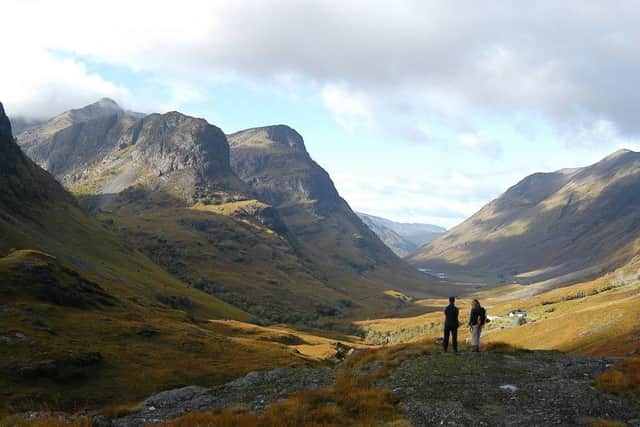Video: Neil Oliver examines '˜Glencoe Massacre finds'
and live on Freeview channel 276
Mr Oliver, president of the National Trust for Scotland, visited the glen to see traces of the lost settlement of Achtriochtan which stood at the time of the atrocity.
Here, the outline of a large turf house can still be seen with archaeologists recovering a fragment of late 17th Century tankard, believed to have originated in Staffordshire, from the site.
• READ MORE: How to spend a weekend in Glencoe


Advertisement
Hide AdAdvertisement
Hide AdA copper alloy coin from the same period was also found in the yard area of the house.
Mr Oliver was shown the remains by Derek Alexander, head of archaeological services at NTS, and the trust’s Natasha Ferguson, lead inventory officer for archaeology.
Achtriochtan is one of six settlements that appear on Roy’s 18th century military maps but which disappear from documents by the 19th Century after the townships were cleared for sheep.
NTS are working at the lost settlements to help place the human stories of the glen back into the landscapes.
Advertisement
Hide AdAdvertisement
Hide AdOn seeing the piece of tankard, Mr Oliver put to the archaeologists: “So that could hypothetically have been used at the time of the massacre?”
• READ MORE: Archaeologists trace lost settlements of Glencoe
Ms Ferguson said that was the case, with the coin also dating to the same period.
Three settlements have been examined by NTS archaeologists with more detail survey work to follow.
Advertisement
Hide AdAdvertisement
Hide AdGlencoe was the scene of one of Scotland’s most infamous murders of the clan era when British soldiers killed at least 38 MacDonalds of Glencoe after their chief tried but failed to meet a deadline to pledge allegiance to King William II.
The soldiers had enjoyed 12 nights of Highland hospitality in the homes of their MacDonald hosts before the slaughter.